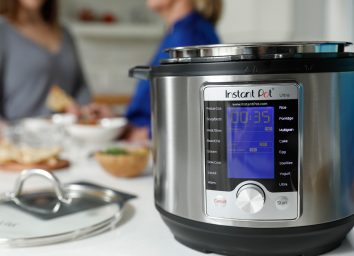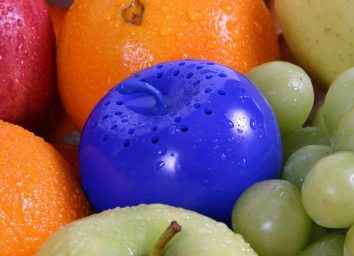The 31 Dirtiest, Grossest Things in Your Kitchen
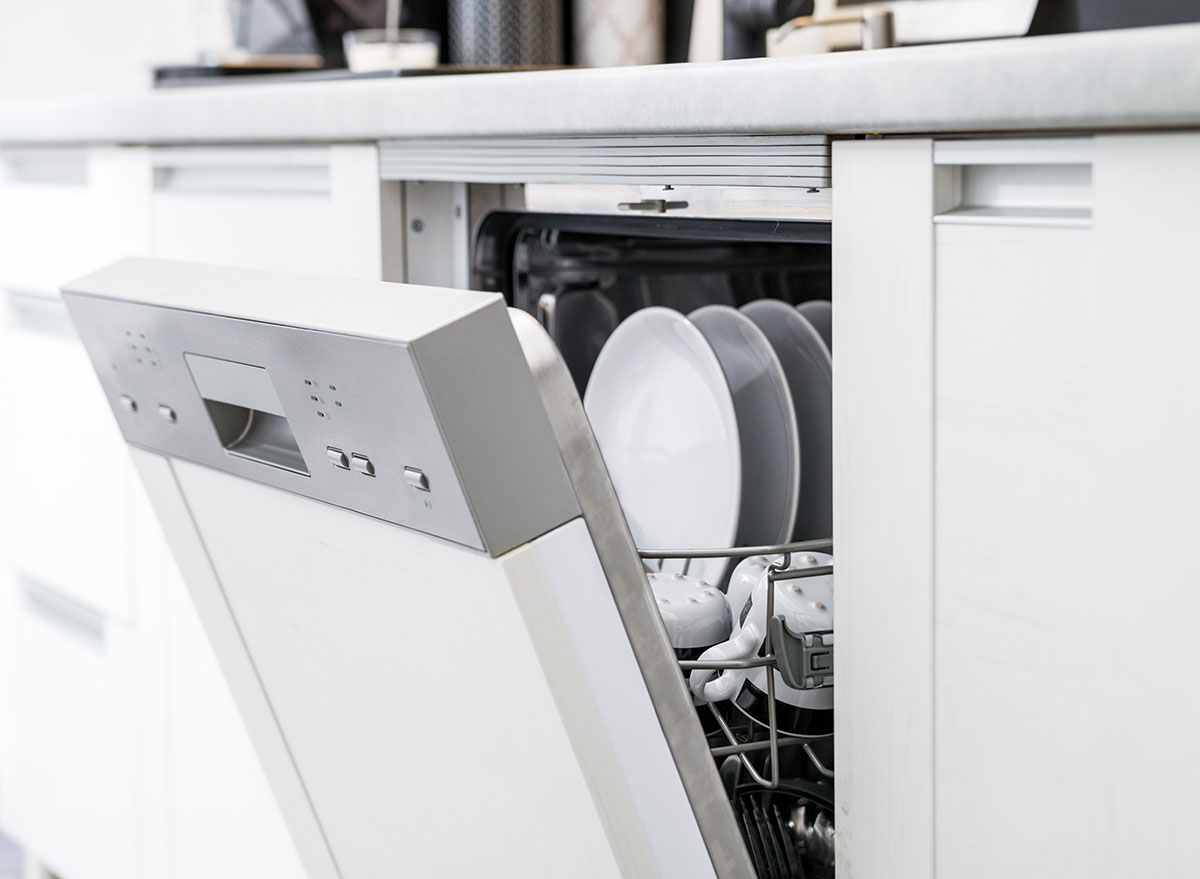
It’s obvious kitchens are exposed to a lot of grime from food spills and grease, but they are also home to lurking bacteria from raw meat to unwashed produce. Sure, you can wipe down the countertops and scrub the stovetop, but there’s a good chance you’re probably not cleaning many of the dirtiest spots in the kitchen as diligently as you should.
“The kitchen is a tough place compared to other places in the houses because you’re dealing with [foods] that can be contaminated with pathogenic organisms,” says Dr. Philip M. Tierno, Jr., professor of microbiology and pathology at NYU School of Medicine. And while we’re about to reveal some of the dirtiest places in your kitchen, one consistent germ-landmine is attached to you: your hands!
“The biggest thing you could do to reduce the spread of bacteria and illnesses is to wash your hands,” says Melissa Joy Dobbins, RD, and founder of Sound Bites Inc. Germs from other environments like smartphones or anywhere around the house can make its way into the kitchen through your hands. Keep those hands clean and then check out which dirty kitchen items and spots you’re going to want to add to your cleaning to-do list. And for more things to keep an eye on in the most important room in any home, here are the most surprisingly dangerous items in your kitchen.
Salt and Pepper Shakers

Just think about how many times you reach for the salt and pepper from your spice rack. You might handle groceries or unwashed produce, then reach for these seasonings to cook something and transfer the germs. Or perhaps you have a cold and season some chicken noodle soup with salt—suddenly, you’ve passed on your germs to the salt shaker. Now think about how many times you clean them. Not so much, right? In a study, researchers tested the salt and pepper shaker surfaces of 30 participants who had early cold symptoms for viruses. They found that out of all the surfaces they tested, every single one had traces of the cold virus.
The Blender Gasket
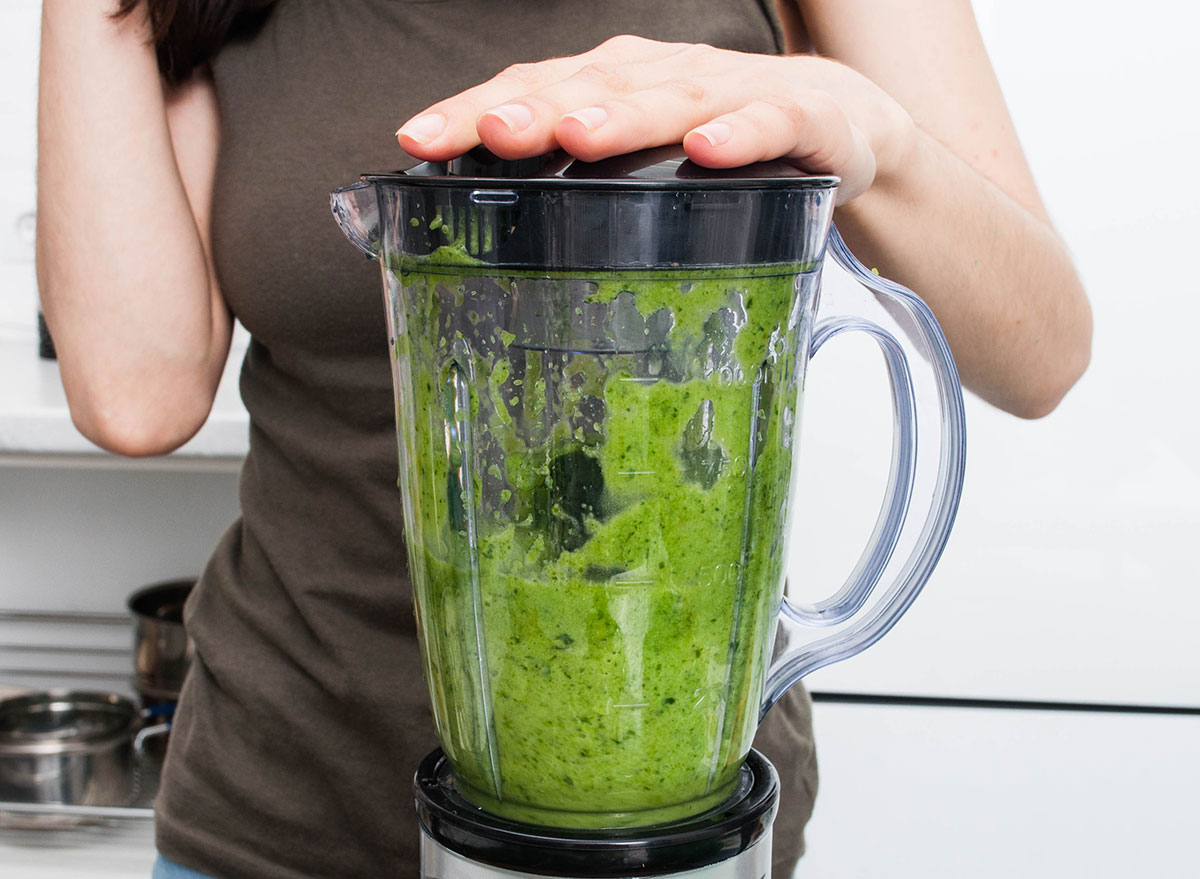
Most people don’t efficiently clean the blender gaskets after using them, says Toby Amidor, MS, RD, CDN, FAND, nutrition expert and Wall Street Journal best-selling cookbook author. An NSF International Household Germ Study saw that 36 percent of these gaskets contain traces of salmonella and 43 of them carry yeast or mold. When you wash your blender, take it apart completely—gasket included—to hand wash. Soak the gasket in water and vinegar to sanitize and fight odors.
Dishwasher Handle
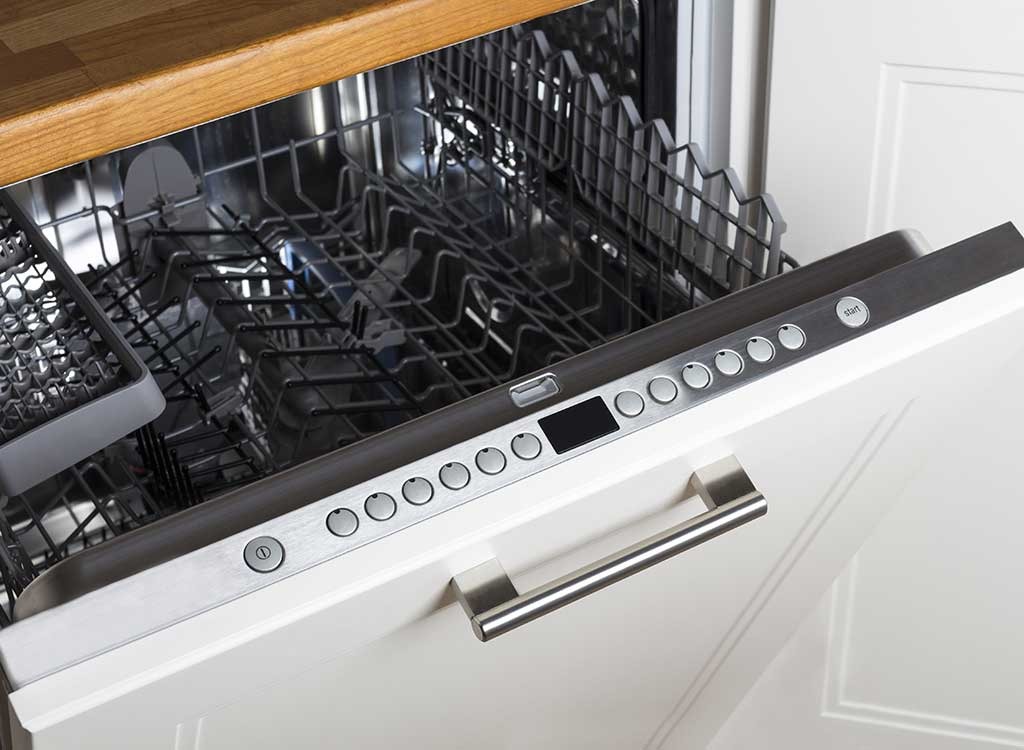
Sure, what’s inside the dishwasher is clean, but what about the actual appliance itself? One study examined 189 household dishwashers across several global cities around the world and found 60 percent of them contained some type of fungi on the doors. And that’s just part of the icky truth; they found that over 50 percent of them contain black yeast on the dishwasher door which can lead to infections in humans.
Dishwasher

The whole dishwasher is kind of a danger zone! Think about it: where do all those food remnants go when you run dirty dishes through the dishwasher? Unfortunately, the bottom of your dishwasher can collect food particles and grease, even though it frequently runs dish detergent and hot water. You can typically remove some of the dishwasher components to hand wash, or simply place a dishwasher-safe mug filled with white vinegar on the top rack and run a normal cycle. The vinegar will loosen up any gunk in the dishwasher and wash it down the drain.
Rubber Spatula
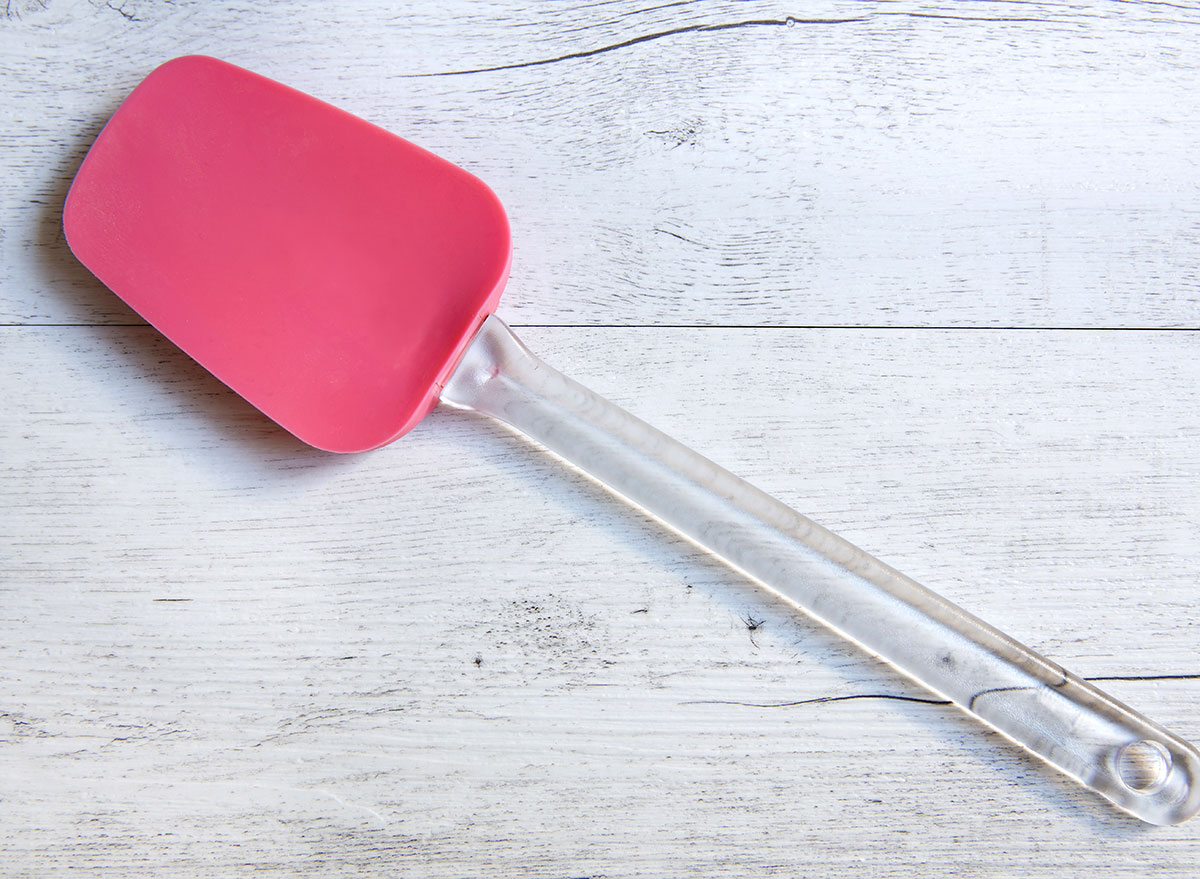
If you love to bake, rubber spatulas are probably in heavy rotation at home. The problem is that where the spatula meets the handle is often just roomy enough for germs and gunk to build up. An infographic from NSF found that rubber spatulas are 36 percent likely to contain levels of E.Coli and 43 percent likely to have yeast and mold. Yikes! So if it comes apart, separate the spatula from the handle and soak both in hot, soapy water. If not, you can do the same thing, just be sure to scrub as close to where these parts connect as possible. Despite how many times you rinse your spatula, this tool might still be lingering with germs.
Refrigerator Handles
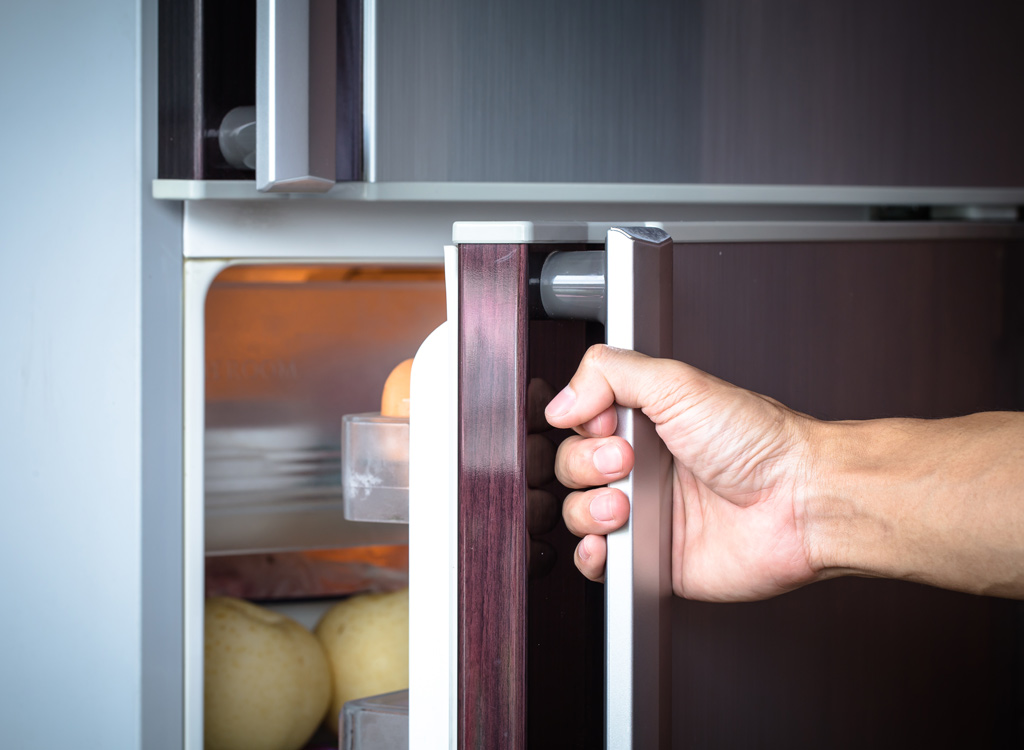
Oh the fridge, everyone’s one-stop shop for food. You make a few trips to the fridge while cooking, but are you washing your hands in between? A fridge’s handle is an easy spot for germs to accumulate because so many people from all walks of life are touching it. And you no idea where your roommate’s hands have recently been. Are you grossed out enough yet?
Dish Towel

Kitchen towels wipe up spills, dry hands, and even act as potholders. One study found that 49 percent of towels tested had bacterial growth that could lead to foodborne illness. Wash your towels regularly, and the researchers recommend using specific towels for specific purposes (don’t dry your clean hands on a towel used to wipe up spills, for instance). And if you’re using the towel to wipe up every mess, your cloth will be covered with a significant amount of bacteria that can give you a foodborne illness. And speaking of salmonella, this is why you should never rinse raw chicken.
Dish Sponge
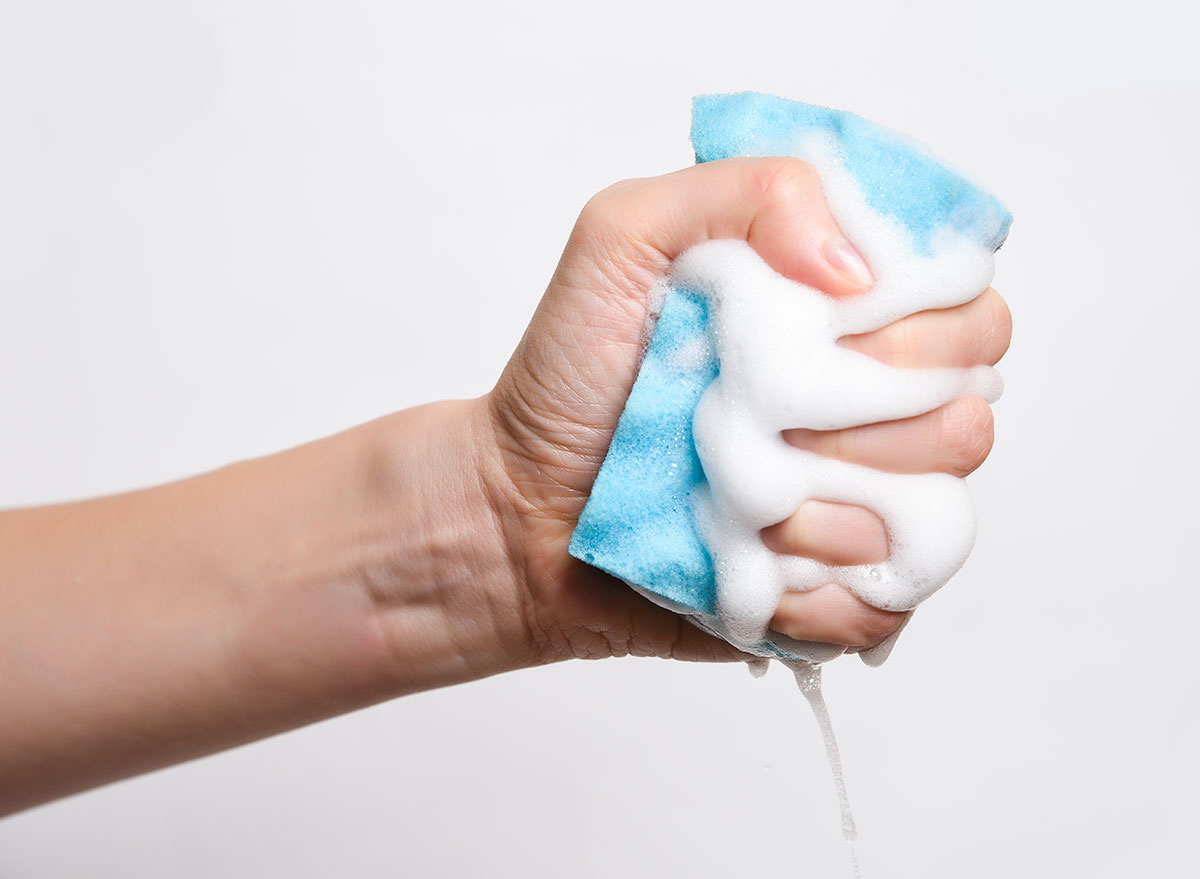
And the winner for the grossest item in your kitchen goes to…yup, the sponge. The sponge is one of the dirtiest items in your entire home, and even sanitizing a used sponge only reduces the bacteria by up to 60 percent. Keep a fresh supply of sponges on hand, or use a cloth that you can clean regularly. “In a matter of a 20-minute period, you have had a generation of (bacteria) growing,” says Tierno. And what makes sponges even grosser is that they may contain a bacteria called campylobacter—which could lead to serious diseases and even paralysis. Yikes!
Coffee Maker
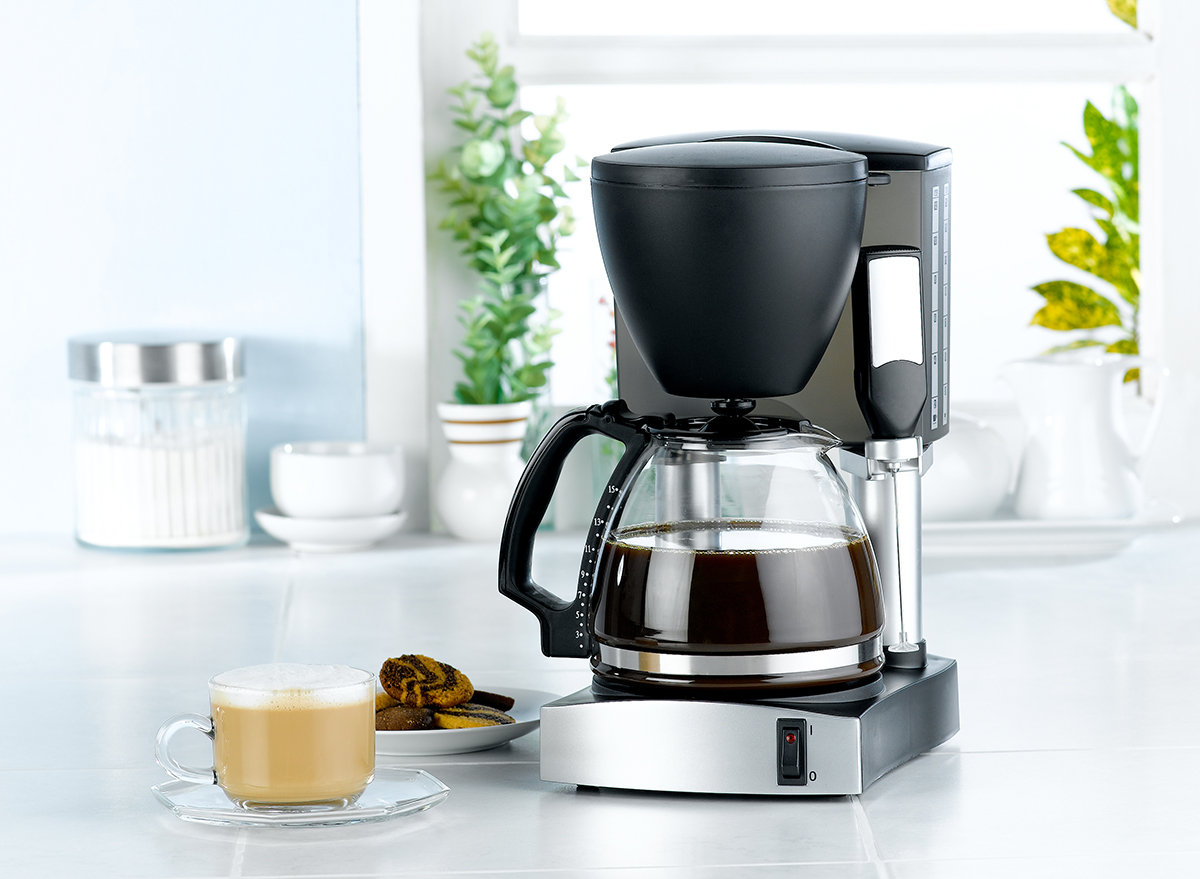
It’s dark, it’s damp, it’s hot, then it’s cold—the water reservoir on your coffee maker is the ideal spot for mold and mildew to thrive. User manuals will include cleaning instructions, which typically recommend pouring vinegar into the reservoir and allowing it to sit; then, run the vinegar through the coffee maker as if you were brewing coffee, followed by two or three rounds of plain water to rinse. Do this at least once a month.
Cutting Board
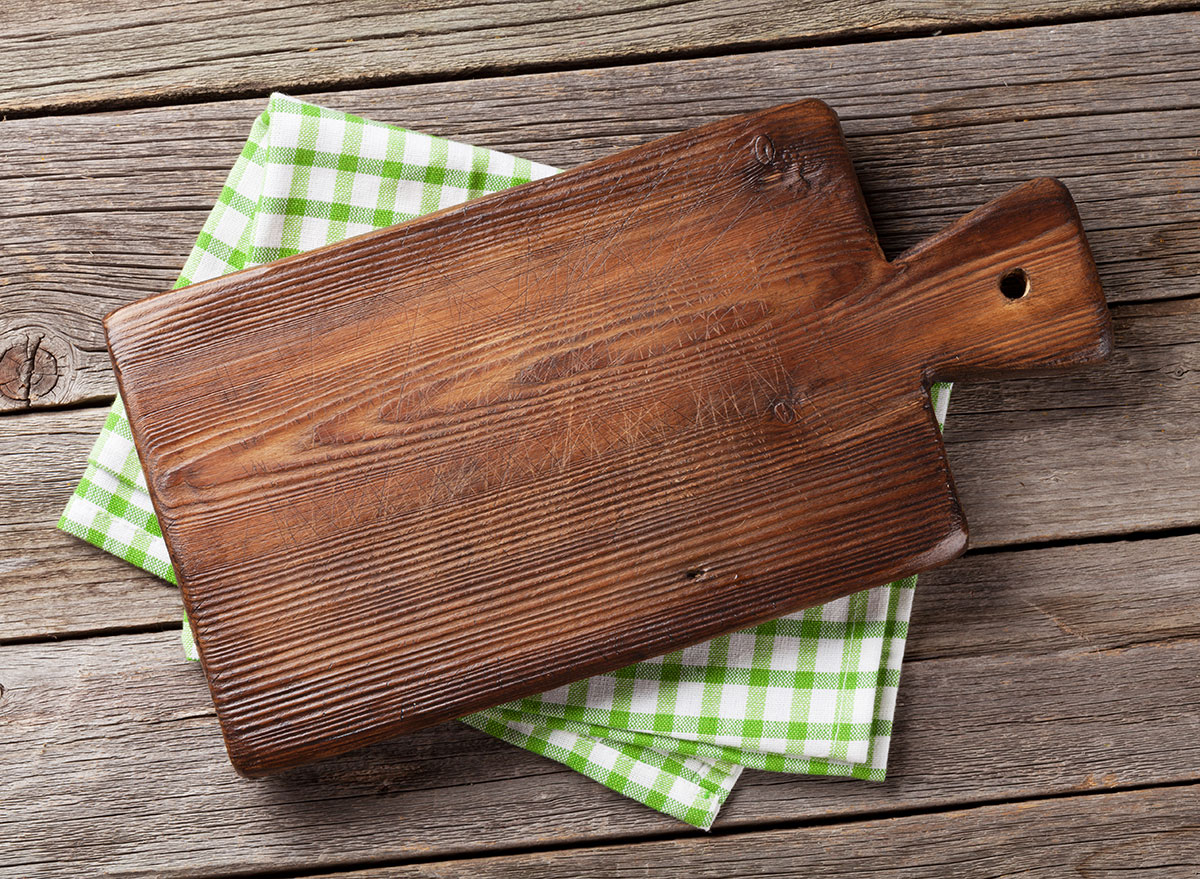
Cutting boards come into contact with a lot of food. Oftentimes, especially with wood cutting boards, many people just wipe them down and use them again later. But this is not effective in sanitizing the boards to prevent the growth and spread of bacteria like E. coli and salmonella, especially if you find yourself using the same cutting board to prepare both produce and raw meat. This is a major don’t as it’s the easiest way for bacteria to grow! Bacteria can hide and grow in hidden cracks of wooden cutting boards too, making it harder to get out. For this reason, Amidor suggests replacing cutting boards every so often.
Leftovers
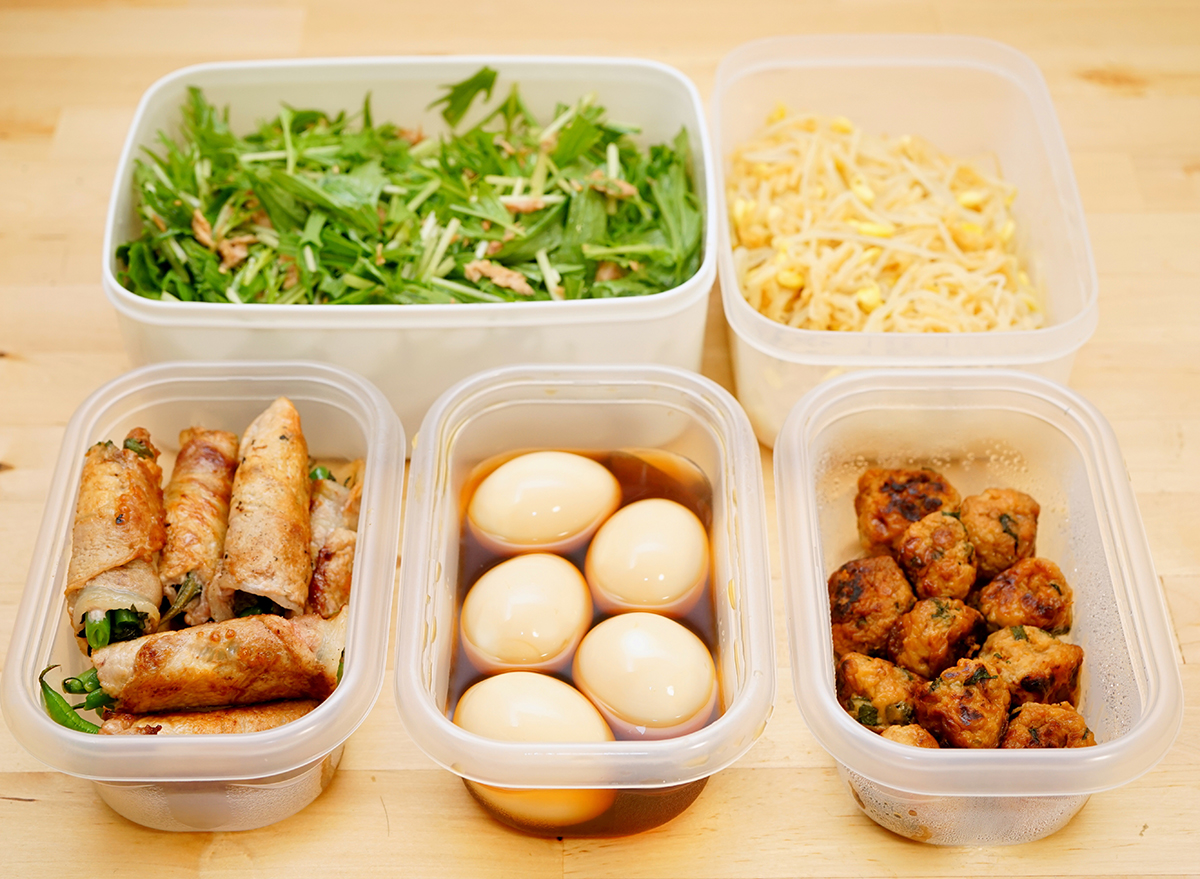
We love leftovers as much as the next person, but just be careful of how long you’re leaving them out. “Leftover foods shouldn’t be left out at room temperature below 90 degrees Fahrenheit for over two hours,” says Amidor. “If someone’s touching it or sneezing by it, there’s possibility to introduce bacteria in various ways.”
Refrigerator
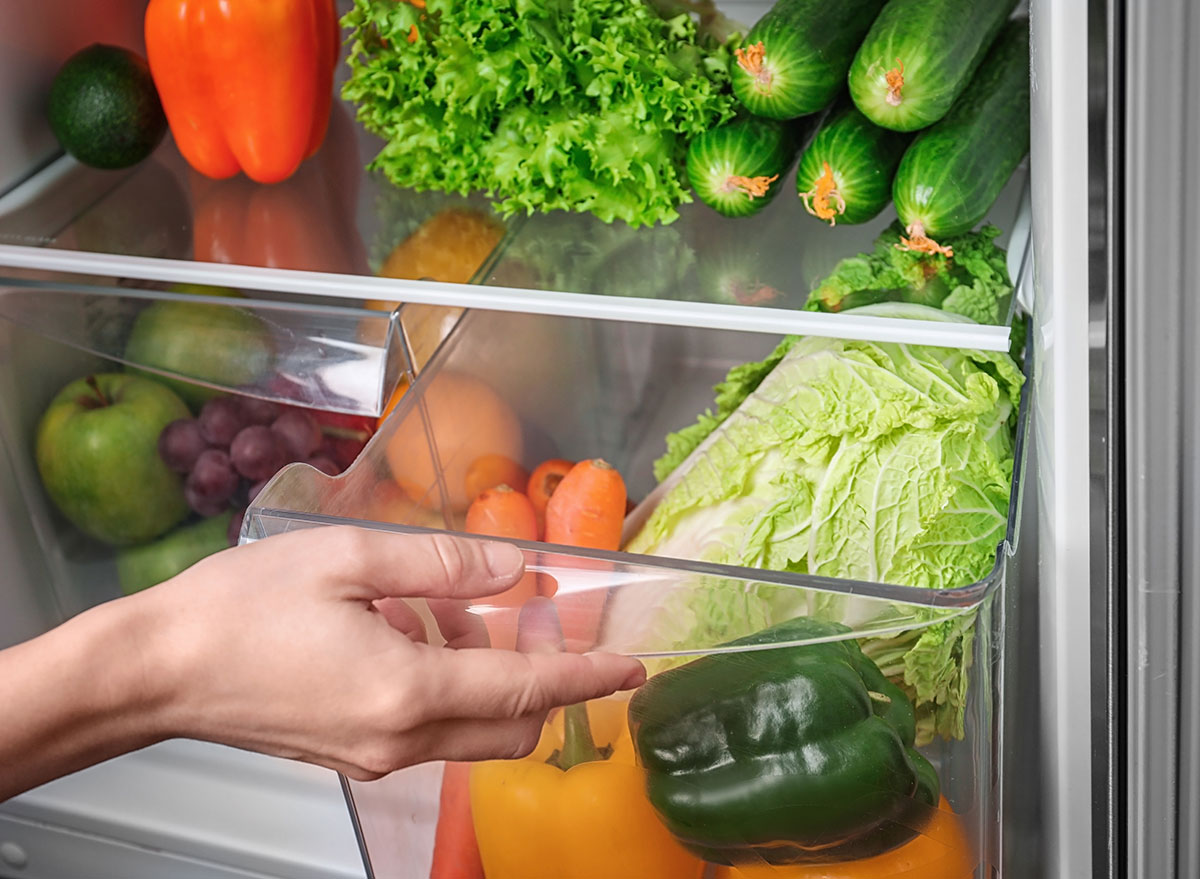
While we rely on our fridge to keep our food fresh, it’s also prone to messiness. Leaks and spills caused by containers that weren’t properly closed or from thawed meat could make their way to other areas in the fridge—thus contaminating fresh produce and other foods, says Dobbins. Plus, we’ve all guilty of leaving some carrots to go limp or spinach to wilt in the bottom of the refrigerator from time to time. But if you don’t clean these drawers that your produce is in, mold is likely to grow. In turn, it can contaminate the fresh fruits and vegetables you plan to eat.
Can Opener
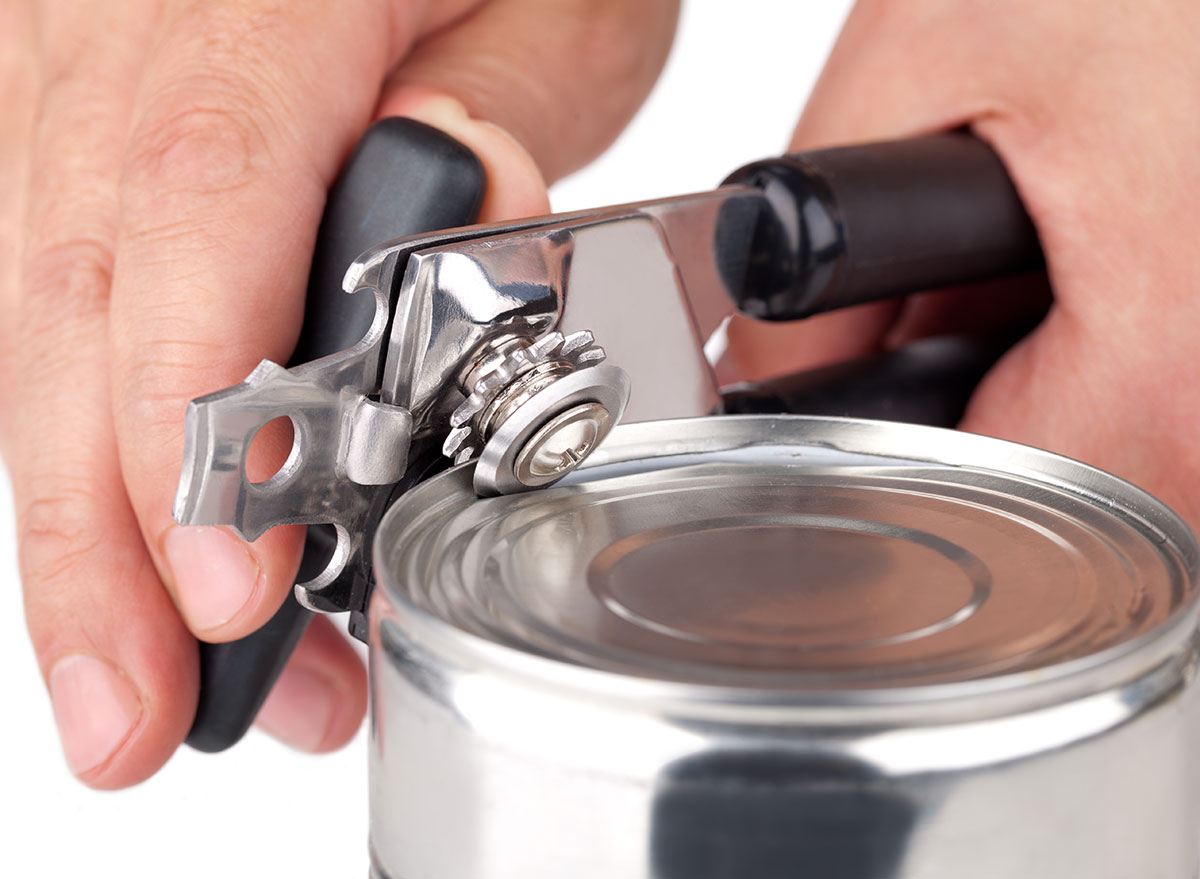
Do you open a can, then put the can opener right back in the drawer? Although you probably whip it out for a few seconds at a time, not washing it properly can result in salmonella and E.coli bacteria growth. See, the sharp blade of a can opener typically comes into contact with the food inside the can because if it’s not cleaned the right way, it’s now spreading germs to the other utensils.
Reusable Grocery Bags
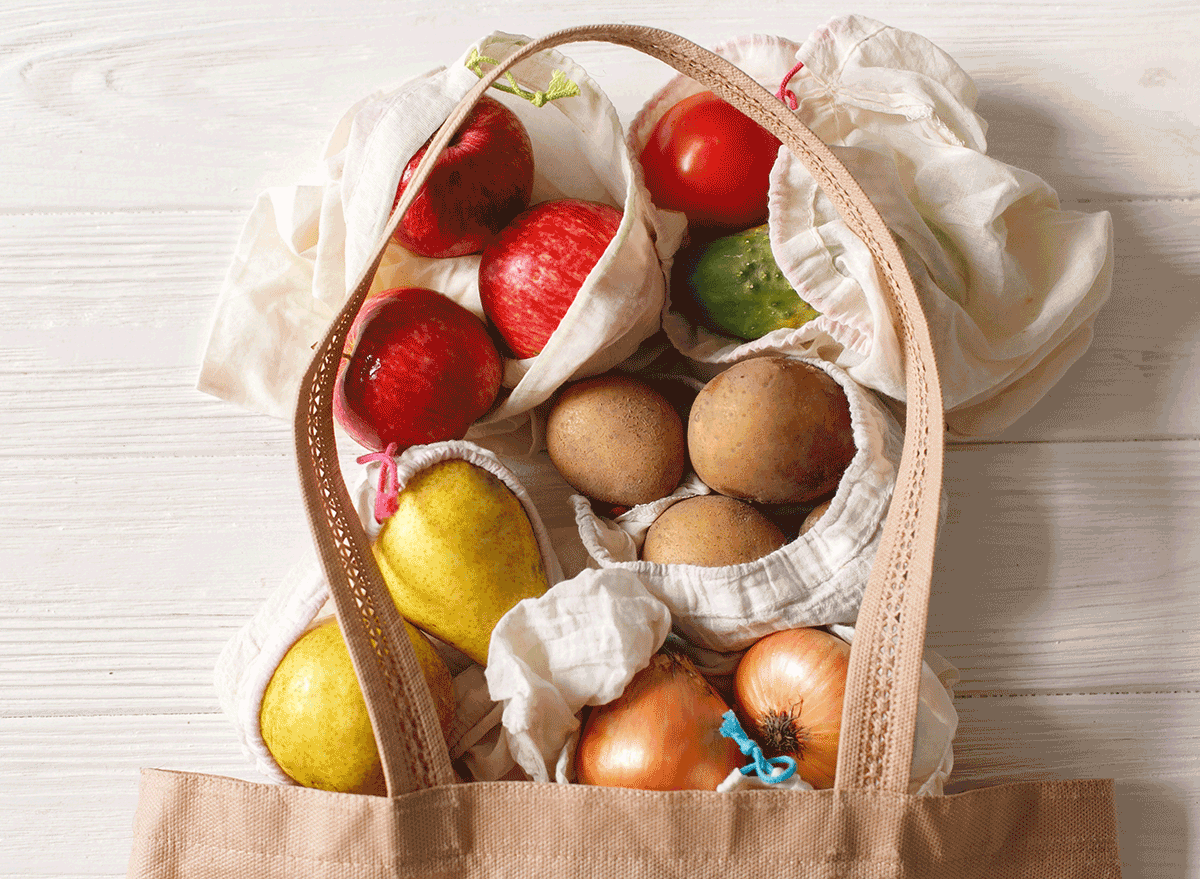
It’s great that you swapped plastic grocery bags for reusable options for the planet, but by carrying items like unwashed produce or raw meats week after week, you are creating an environment for germs to thrive.
“You’re putting raw meat or eggs in there, taking it home, and then using it again for fresh produce,” says Amidor. “You’re just asking for cross-contamination bacteria to be growing in there.” Throw cloth bags in the laundry; if you have bags that can’t be washed, wipe them down inside and out with a cloth and hot, soapy water.
Vegetable Drawer
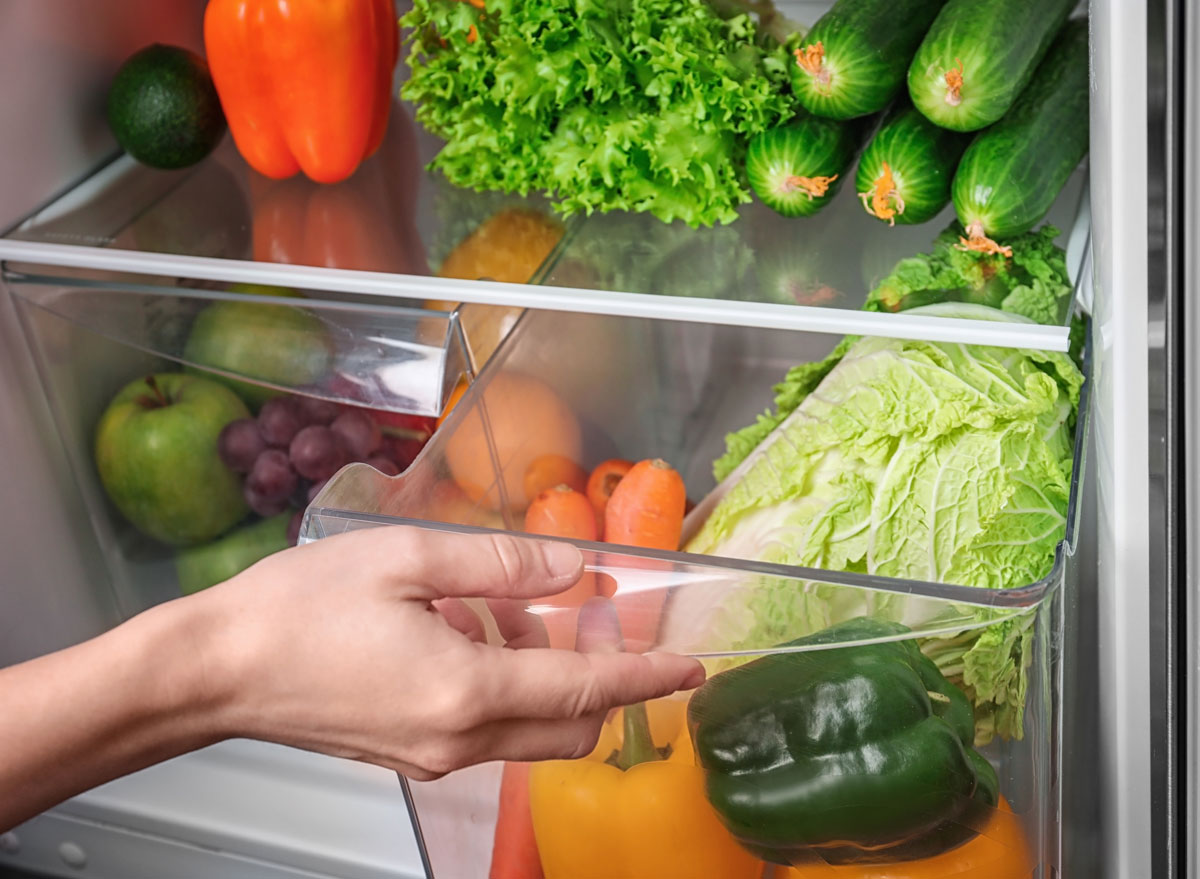
“Unfortunately, [vegetables in the drawer] go rotten and get forgotten about,” says Dobbins. The vegetable compartment can end up being home to yeast, mold, and listeria, all of which can contaminate any other fresh vegetables into your fridge.
Expired Food in Your Fridge and Pantry
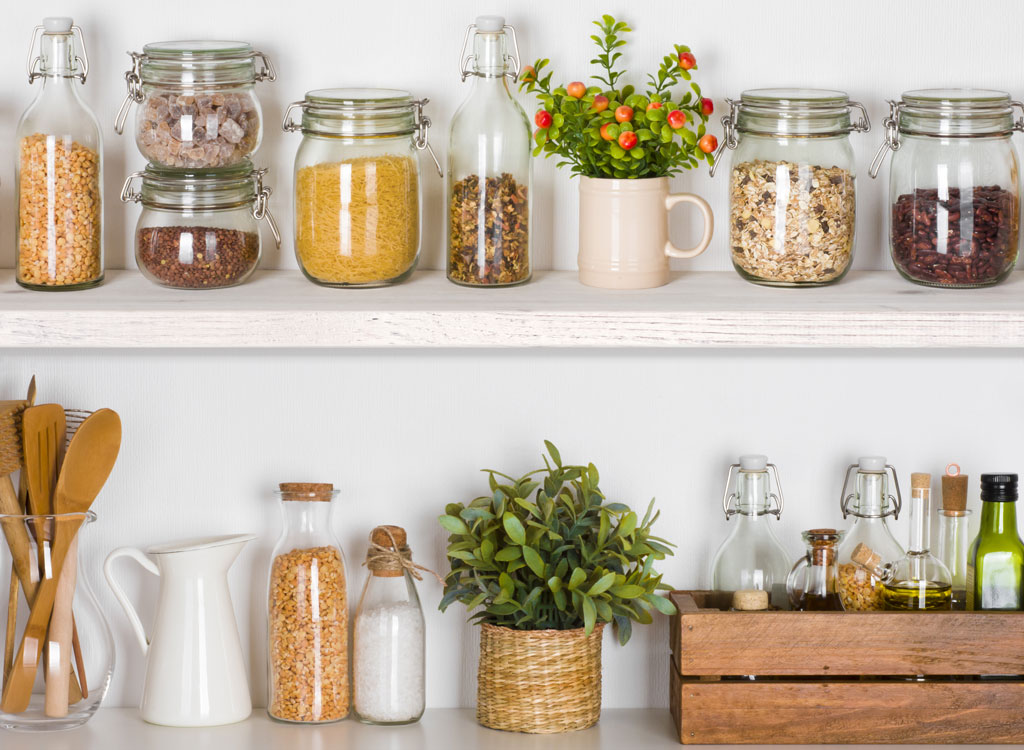
Foods that live past their shelf life can attract unwanted guests. “It is really important to rotate your stuff, even in a small kitchen. You can catch pests before having an infestation,” says Amidor. A bag of rice does not seemingly last forever; if it’s been there for a while, you may spot a little worm if you look closely.
Knife Block
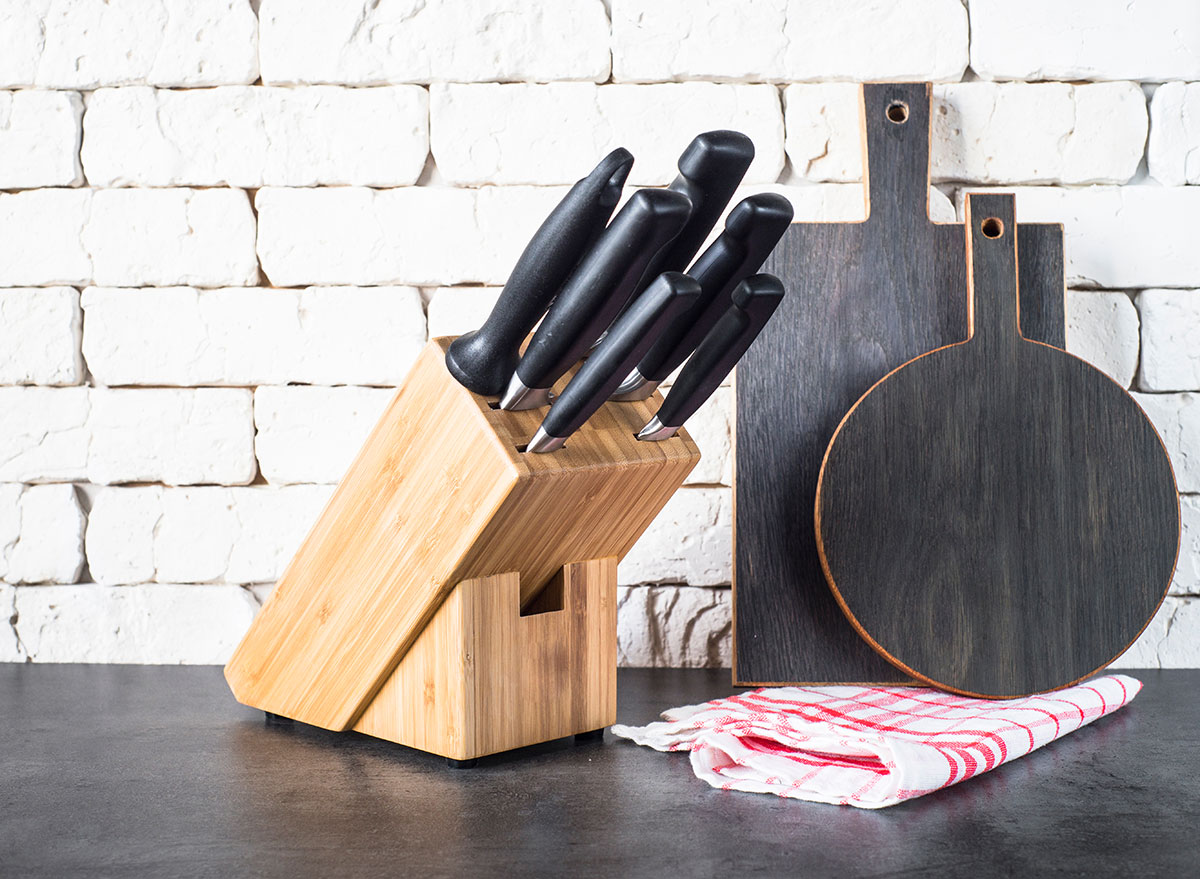
Knife blocks can collect dust and debris. If you put away your knives wet, you are also creating a dark, damp environment for bacteria to grow. You can wash it by submerging the knife block in soap and hot water, using a straw cleaner to clean the empty slots. Be sure to let it dry completely and coat the wood in mineral oil to prevent cracking. You might also consider ditching the knife block for a magnetic strip, which is easier to clean.
Range Hood
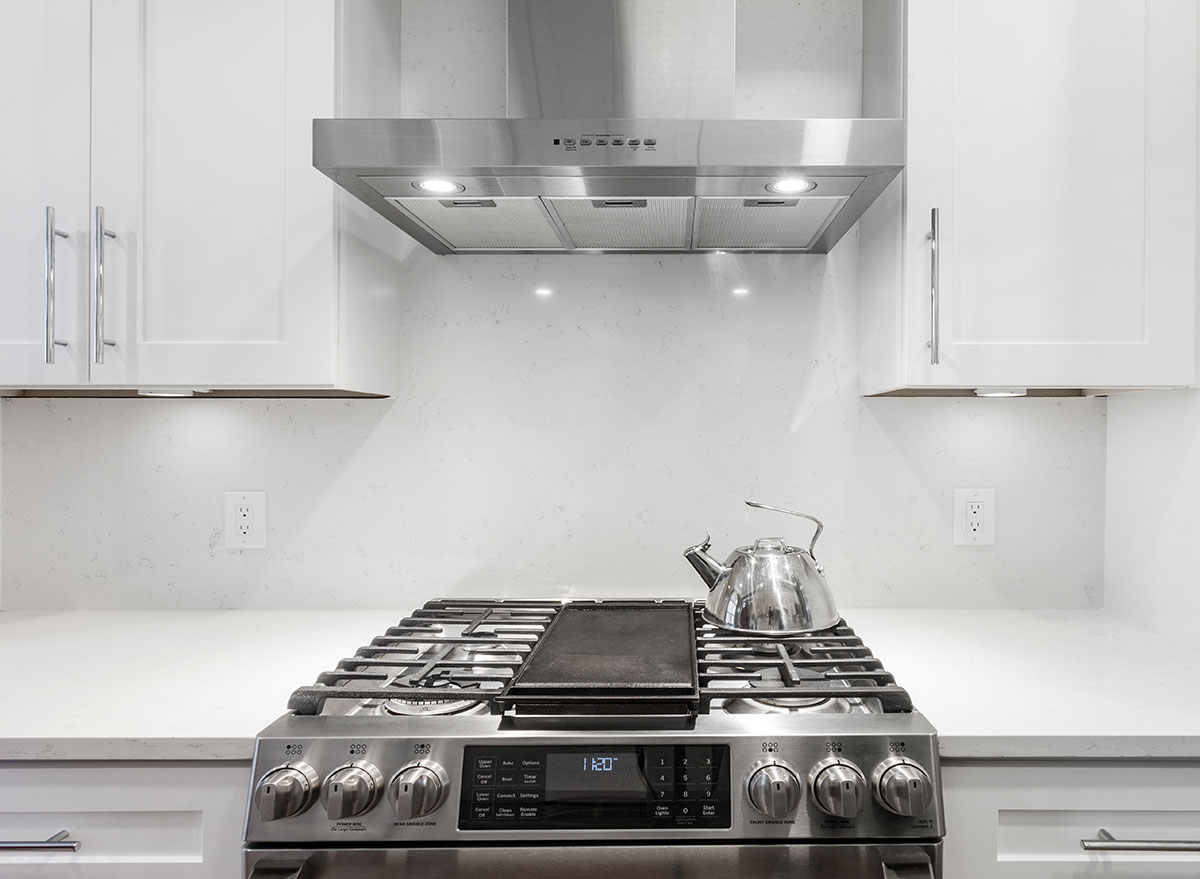
The range hood above your stove can collect a lot of grease, which is not only gross—it can be a fire hazard. To cut through the grease, Beth McGee, author of Get Your House Clean Now: The Home Cleaning Method Anyone Can Master, recommends mixing 1/2 cup water, 1/2 cup vinegar, and 1 tablespoon grease-cutting dish soap in a spray bottle.
Garbage Disposal

The garbage disposal catches many bits of food, so it can get gunky quickly. “For the dish disposal, I would use a bleach spray cleaner for that,” McGee says. “Spray it down and make sure the disposal is off. You can pull the fitted gasket right out and soak it in hot soapy water with a dash of bleach cleaner and scrub it well.”
Refrigerator Water/Ice Dispenser
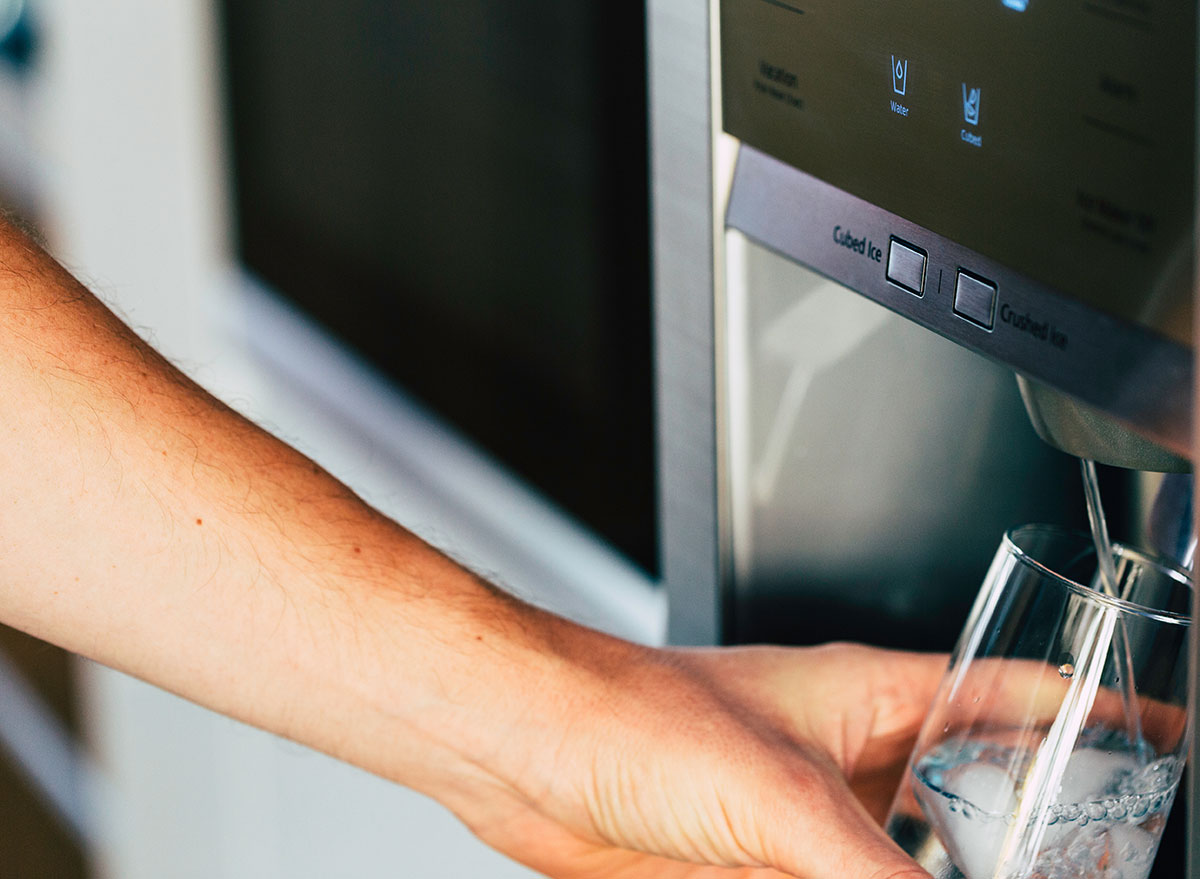
“The ice dispenser on a fridge tends to collect a lot of really gross stuff, along the lines of a petri dish,” McGee says. To clean it, McGee recommends using a bleach spray cleaner on a damp microfiber cloth. Wipe out the dispenser, then rinse it well with another wet cloth. Look up inside the dispenser to make sure it is clean, and run ice and water a few times to remove any remaining cleaner and gunk before grabbing a drink.
Stove Handles
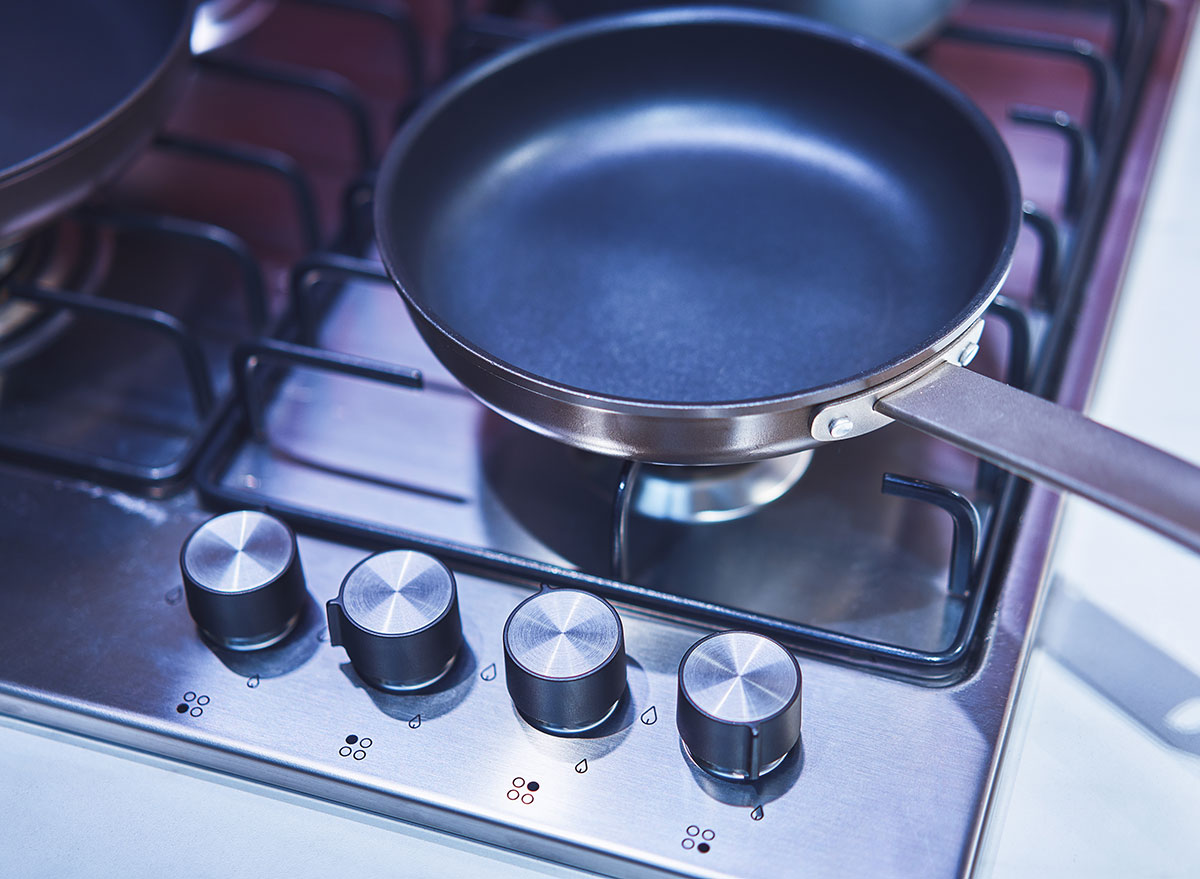
You might wipe down the stove handles, but underneath these handles can be disgusting. “Most people wipe around those, even though they come right off, generally pretty easily,” McGee says. McGee takes the handles off and uses the same homemade spray cleaner as for the range hood to clean and sanitize this area.
Rubber Seals on Pressure Cooker or Storage Containers
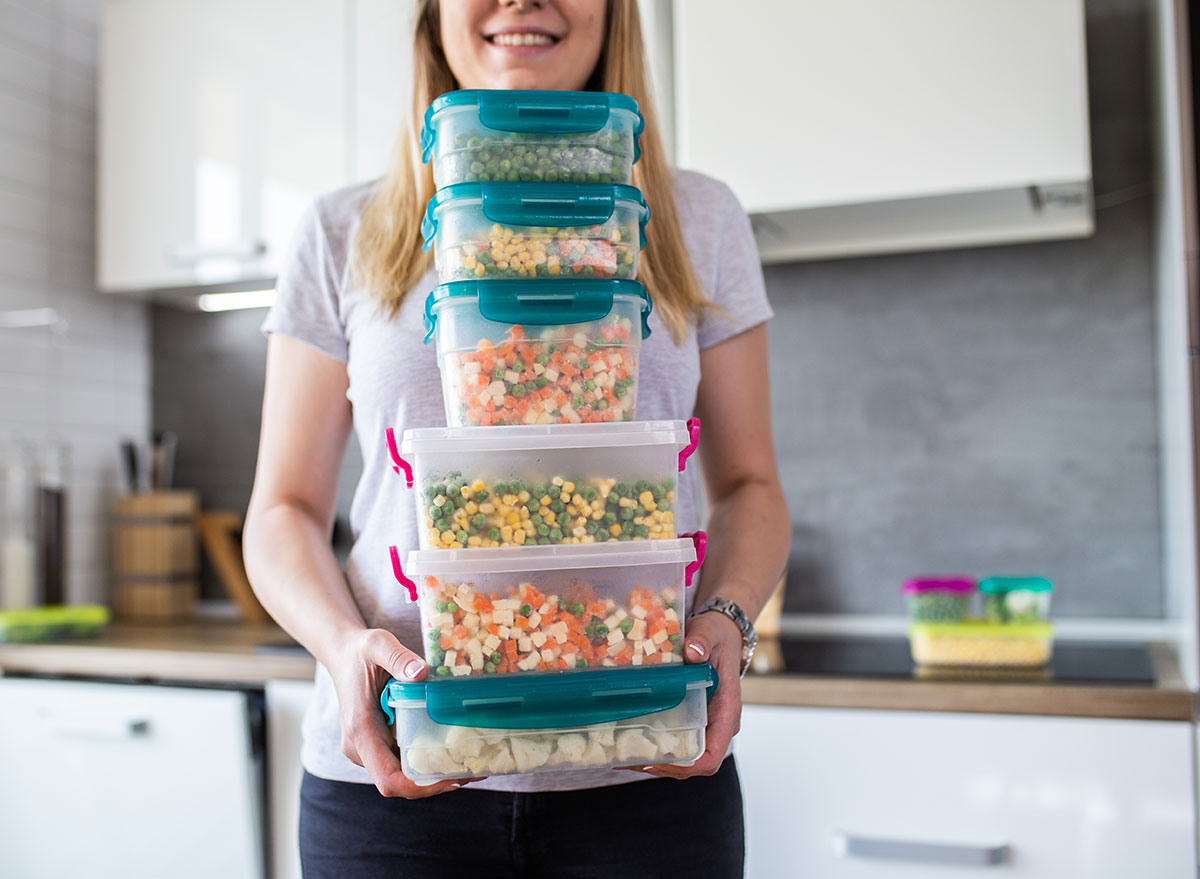
Similar to the blender gasket, the rubber seals on items like food storage containers or your beloved Instant Pot can trap food particles and odors. Soak these items in vinegar and hot water, then leave them out to dry completely.
Microwave Buttons
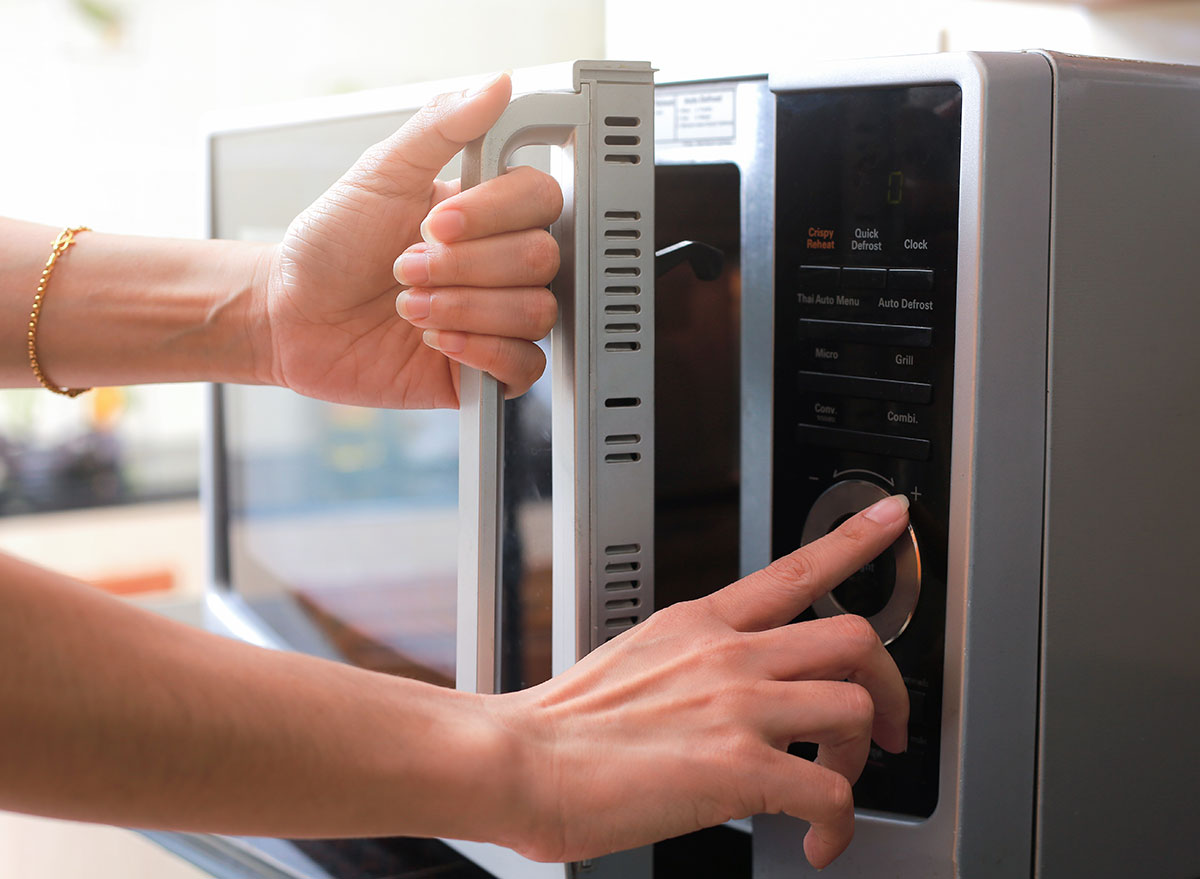
It’s easy to get caught up in the moment of cooking a meal, so you might not notice that you’ve handled unwashed produce, raw meat, or greasy foods before needing to use the microwave. The buttons on a microwave can get grimy fast, so be sure to regularly wipe them with cleaner or hot, soapy water.
Countertops
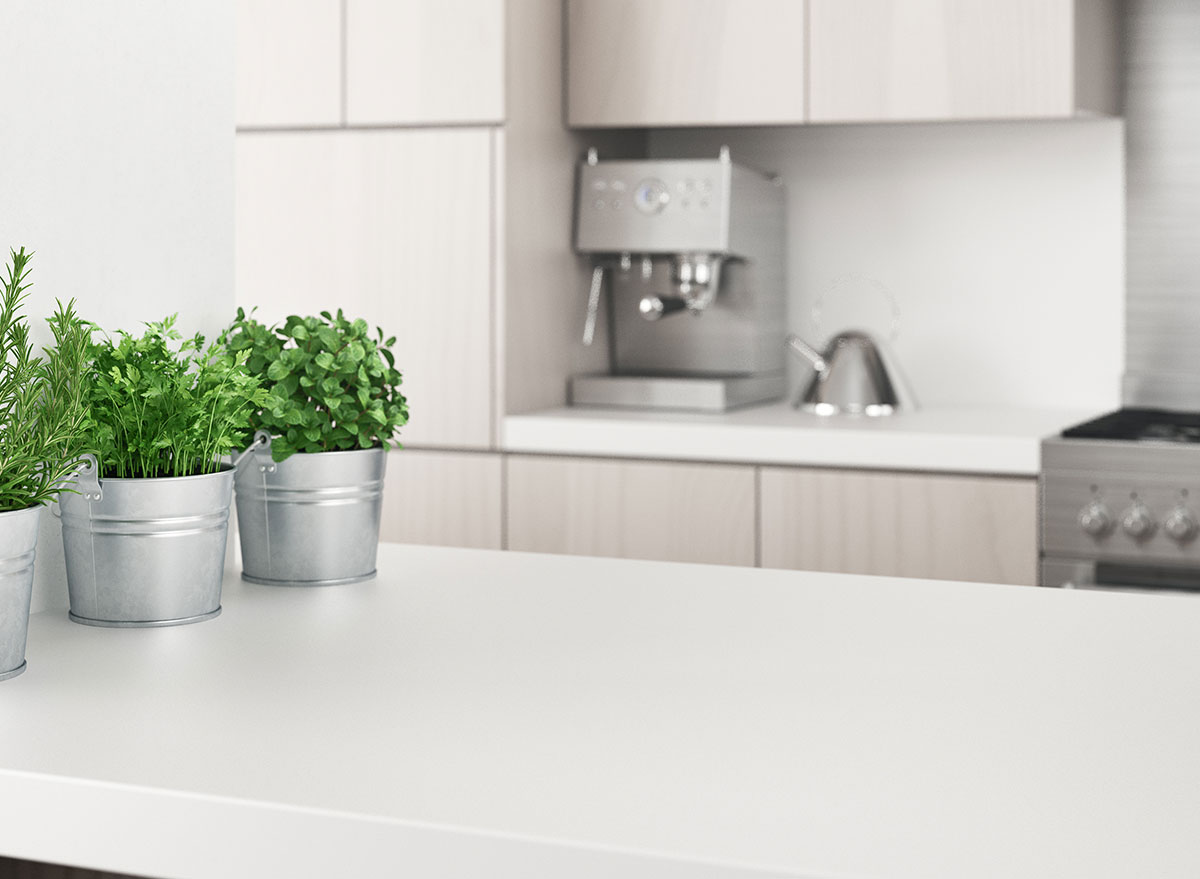
You might be cleaning your countertops daily, but are you really cleaning them? They happen to catch germs from a lot of places: groceries, lunch boxes, mail, even your phone. The safest procedure is to clean countertops at least once a day with hot, soapy water followed by diluted bleach to sanitize them.
Dog Bowls
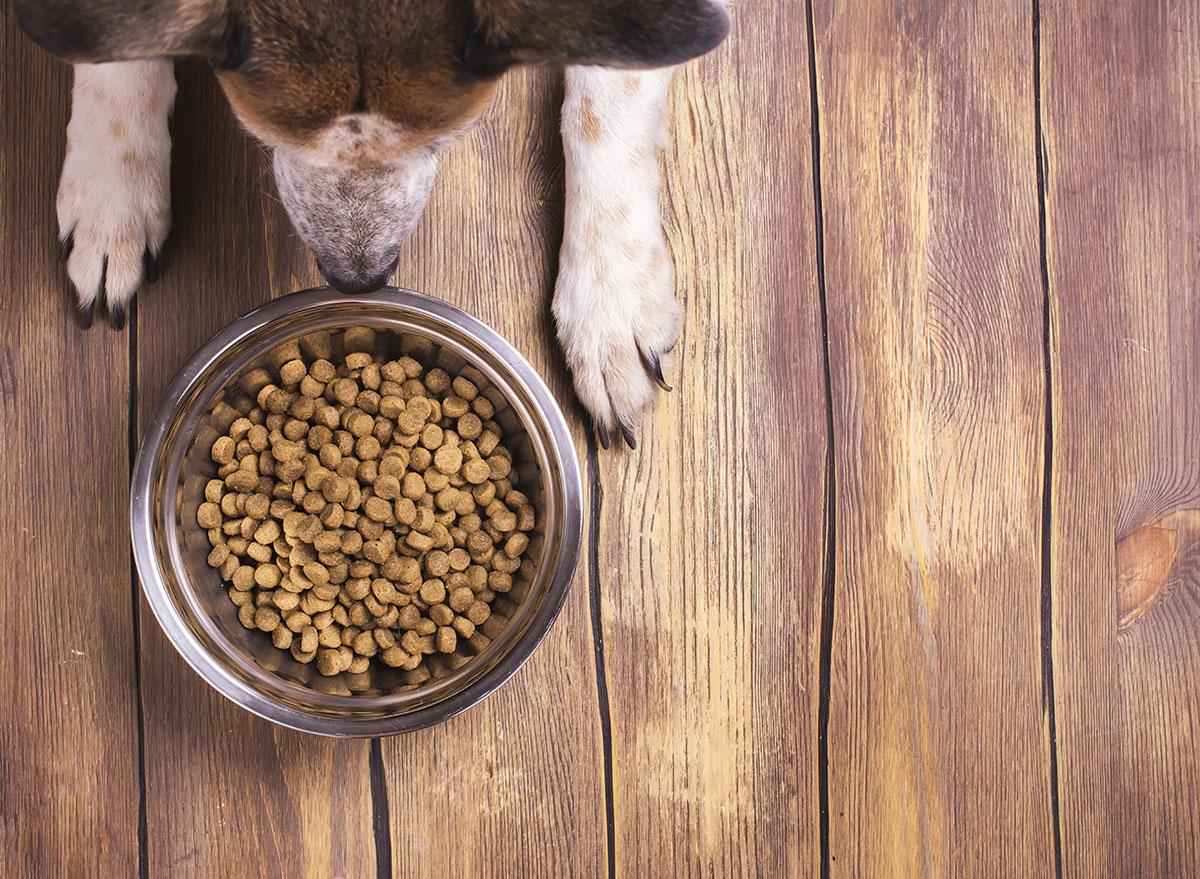
Many people feed Fido in the kitchen, but those pet bowls can get gross quickly, and not just from dog drool. One study found harmful bacteria including E. coli, MRSA, and salmonella on pet food bowls. To keep everyone in your family safe, NSF International recommends cleaning these bowls daily.
Trash Can
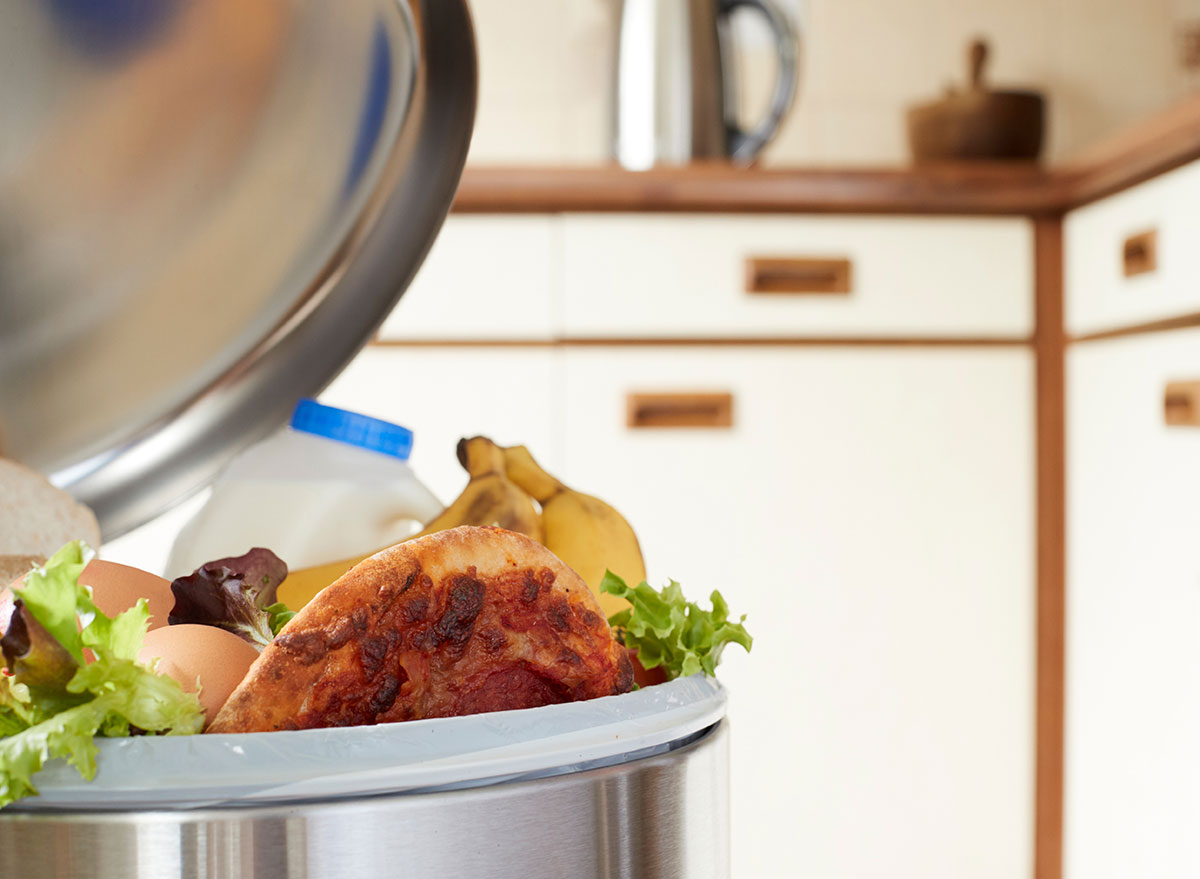
Obviously, trash cans are dirty, considering they are filled with garbage. But that garbage can spill and splatter all over the inside and outside of the trash can, creating an opportunity for odor to linger or mold to grow. Be sure to occasionally wash your trash can, inside and out, to keep smells and germs at bay.
Sink Faucet
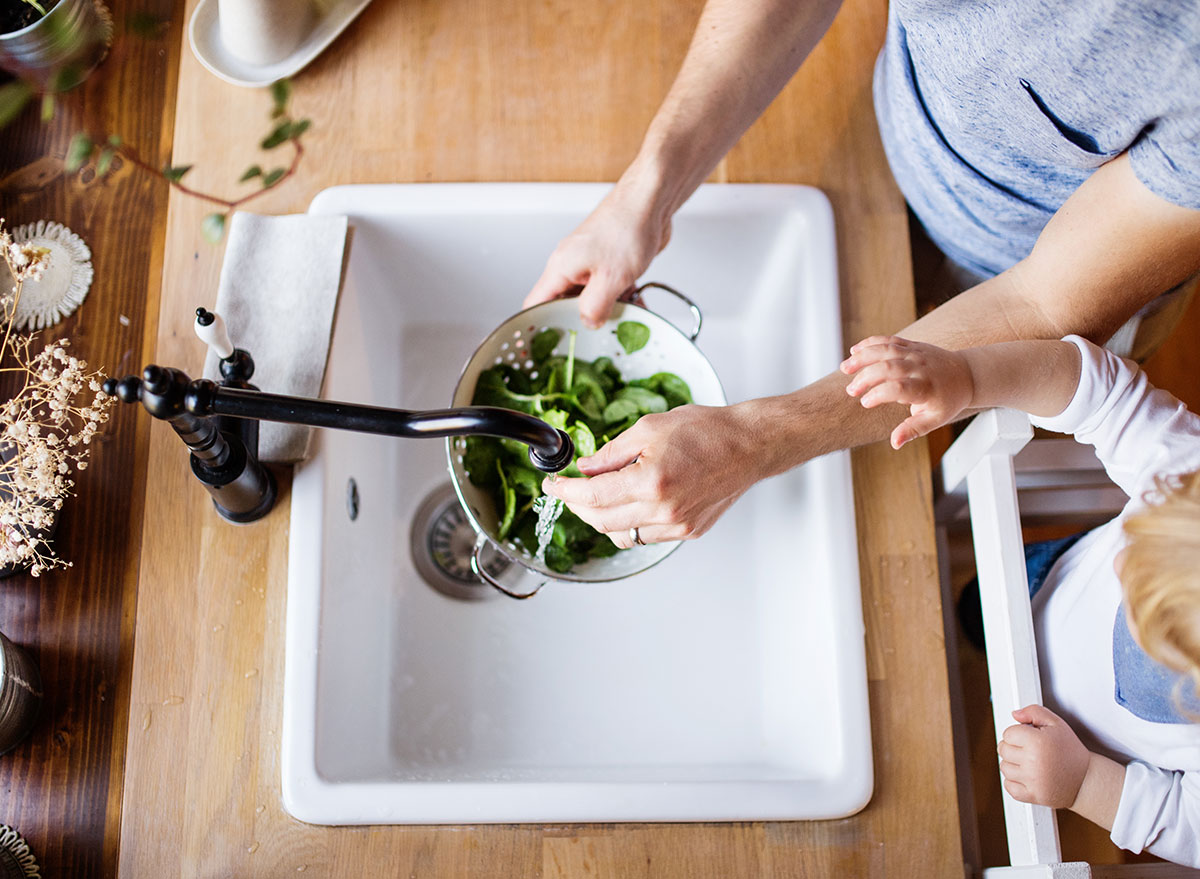
The kitchen sink faucet will see a buildup of hard water, calcium, and/or mineral deposits, leaving gunk all around the spout of the faucet. Luckily, you can clean this easily and mostly hands-off by filling a plastic bag with water and vinegar, tying it around the faucet, and leaving it overnight to soak.
The Kitchen Sink
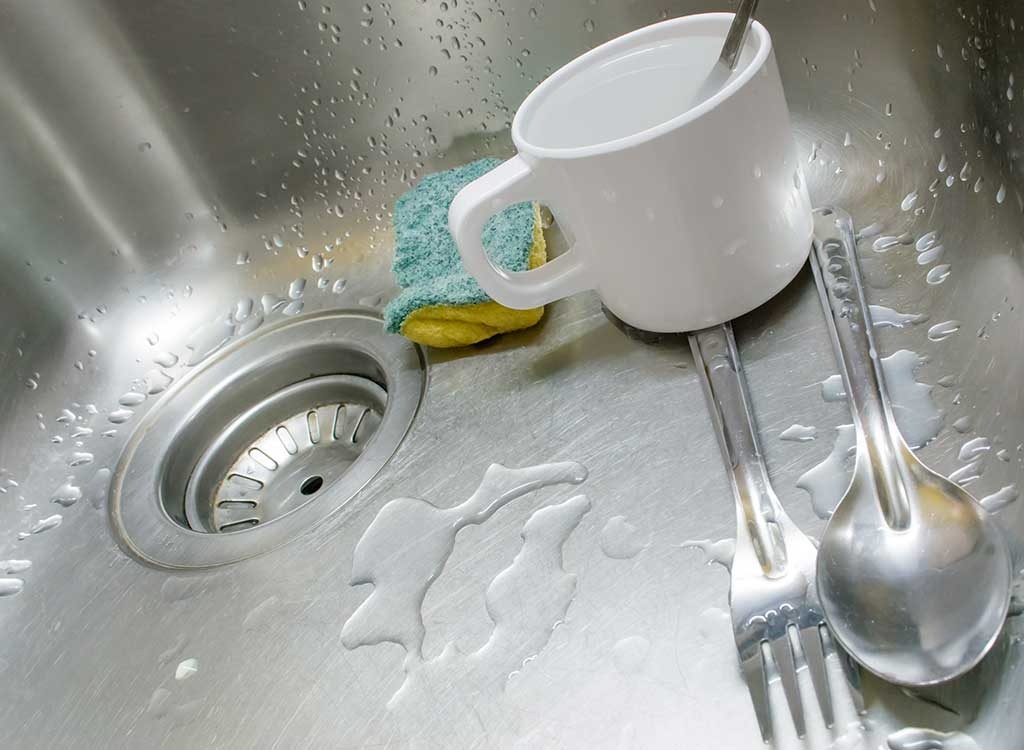
Think about all the stuff that you do in your sink: clean produce, defrost meat, dispose of food waste, etc. You may not be doing it all at the same time, but inadequate washing of your sink could cause different types of bacteria to cling. “People often use the sink as a pot to let things like vegetables hang out,” says Tierno. But the sink happens to be dirtier because it’s not cleaned as frequently, says Tierno. And throwing everything from dirty dishes to meats in there causes bacteria buildup, which makes the sink a breeding ground for cross-contamination.
Inside the Oven
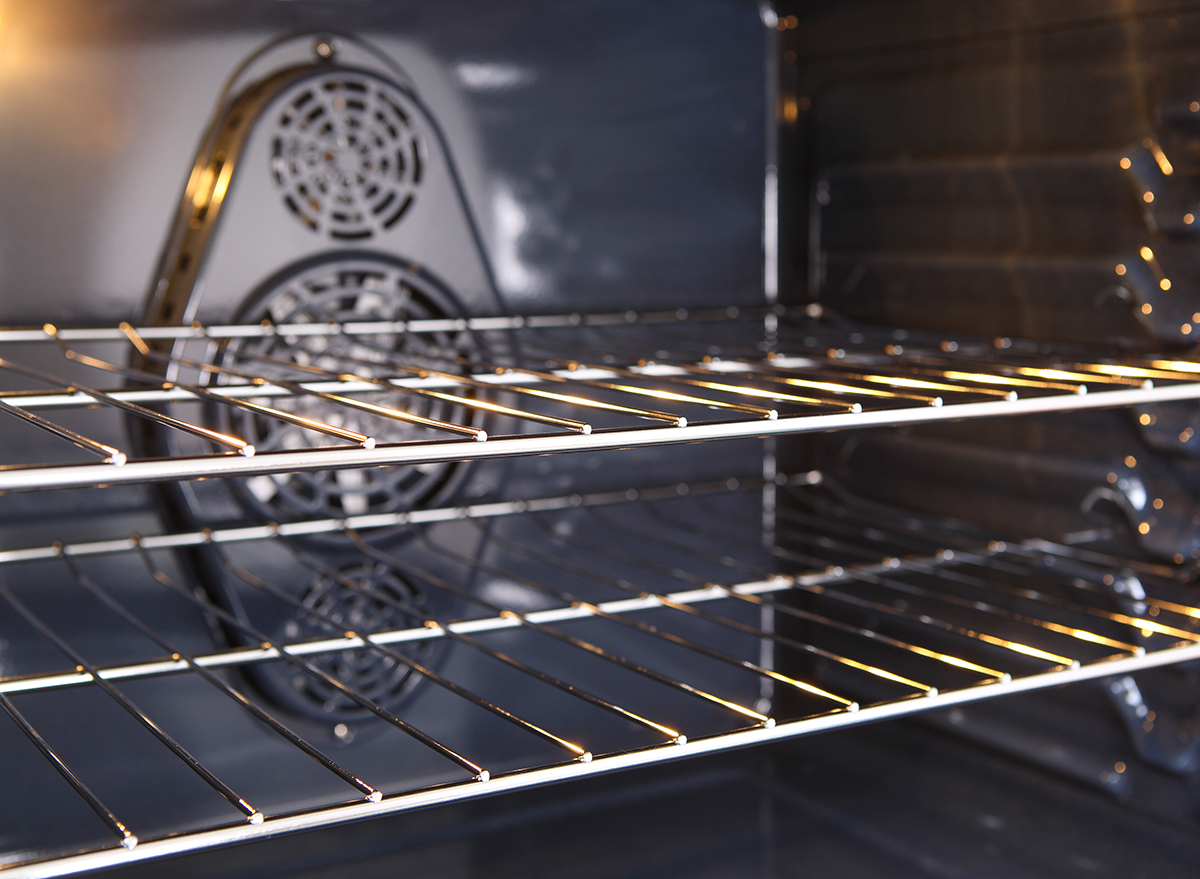
Ovens get grimy with prolonged use, and a buildup of food and grease can actually become a fire hazard. If you use it frequently, scrub the inside of your oven with store-bought or DIY cleaner about every three months.
Water Bottles
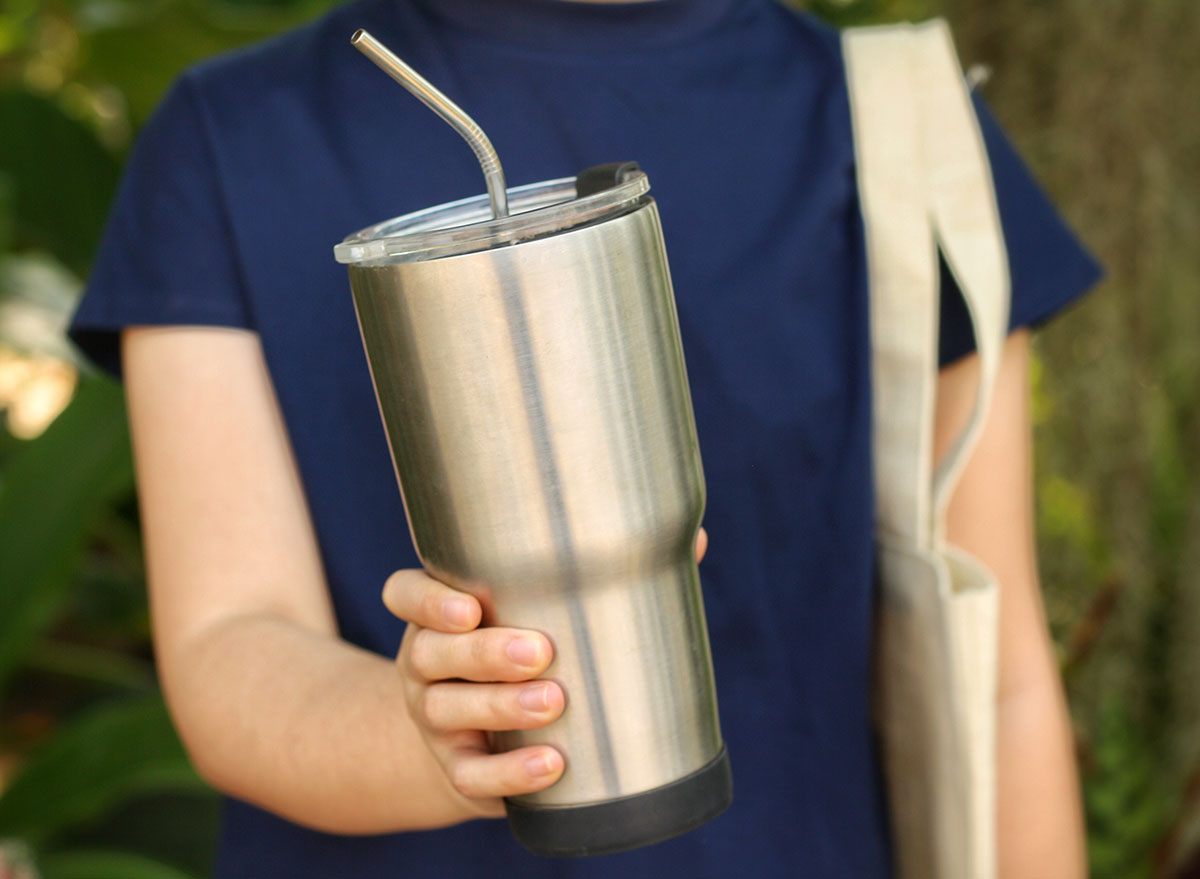
Because they just have water in them, water bottles don’t need to be washed frequently, right? Actually, reusable water bottles are some of the dirtiest items in a kitchen, and rinsing them with water or giving them an occasional scrubbing just doesn’t cut it. There’s a chance bacteria can live in these bottles, which can cause you to experience “symptoms such as nausea, vomiting, and diarrhea,” according to Dr. Robert Glatter, assistant professor of emergency medicine at Northwell Health and attending emergency physician at Lenox Hill Hospital.
Freezer

Freezers are handy for preserving leftovers or keeping plenty of vegetables and meats on hand for a quick meal, but it is easy to forget all that is in there. If there’s a spill that happens before something is fully frozen, you might not notice it for months. To give it a deep clean, place everything inside in a cooler, turn the freezer off or unplug the refrigerator, and wipe everything down with a cloth and a water-white vinegar mixture. As you put the food back in, be sure to throw out anything questionable. Not everything has a place in your freezer, though. Proof? Here are 13 Foods You Should Never Put in Your Freezer
Reporting by Paige Bennett and Bianca Mendez


